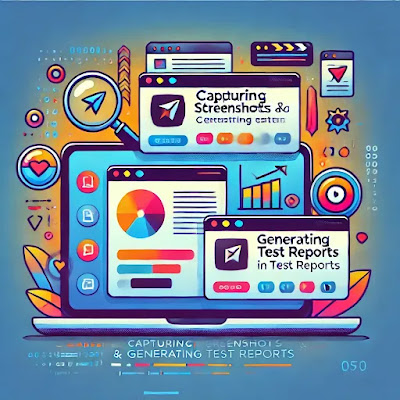Testing Different Viewports and Devices in Playwright
Testing Different Viewports and Devices in Playwright
Responsive design is essential for delivering a seamless experience across different devices, from desktop computers to tablets and mobile phones. Testing your web application across multiple viewports and devices is crucial for ensuring a consistent experience, and Playwright provides a powerful toolkit to make this process efficient and effective. In this article, we’ll explore how to use Playwright for viewport and device testing, covering essential techniques, best practices, and key features for responsive testing.
Why Test Viewports and Devices?
Today’s users access websites from a wide range of devices, each with unique screen sizes and capabilities. Testing across different viewports ensures that your application is visually consistent and functionally reliable regardless of the device. Responsive testing allows you to:
- Ensure usability across mobile, tablet, and desktop devices.
- Validate layout and styling adjustments for each screen size.
- Identify device-specific issues early in the development cycle.
Getting Started with Playwright for Viewport Testing
To begin testing viewports and devices with Playwright, ensure it’s installed in your project:
npm install @playwright/testSet up Playwright by launching a browser, creating a context, and initializing a page instance:
const { chromium } = require('playwright');
(async () => {
const browser = await chromium.launch();
const context = await browser.newContext();
const page = await context.newPage();
})();
Testing Common Viewports
Playwright makes it easy to simulate different screen sizes by setting viewport dimensions. This feature allows you to test responsive layouts without physical devices:
1. Setting a Custom Viewport Size
To manually define viewport dimensions, use the setViewportSize() method:
await page.setViewportSize({ width: 375, height: 667 });This configuration simulates a common mobile screen size, allowing you to check the mobile responsiveness of your application.
2. Testing Standard Device Viewports
Playwright includes pre-defined device configurations, making it simple to switch between popular devices:
const iPhone = playwright.devices['iPhone 11'];
const context = await browser.newContext({ ...iPhone });
const page = await context.newPage();
This example configures the context to simulate an iPhone 11, including both screen size and user-agent settings.
Testing Multiple Devices in Parallel
For more efficient testing, you can run multiple device configurations in parallel. Here’s an example using a loop to iterate over several devices:
const devices = ['iPhone 11', 'Pixel 5', 'iPad Pro'];
for (const device of devices) {
const deviceConfig = playwright.devices[device];
const context = await browser.newContext({ ...deviceConfig });
const page = await context.newPage();
await page.goto('https://example.com');
// Perform tests for each device here
}
Automating Responsive Behavior Checks
Responsive design often includes behavior changes based on screen size, such as mobile navigation menus or hidden content. Playwright’s API allows you to automate checks for these features:
1. Checking for Element Visibility
Verify whether specific elements appear or hide based on the viewport size:
await page.setViewportSize({ width: 1024, height: 768 });
const isVisible = await page.isVisible('.mobile-menu');
expect(isVisible).toBe(false); // Checks if mobile menu is hidden on larger screens
2. Testing Layout Shifts and Changes
Responsive layouts may shift as screen sizes change. Automate layout validation by capturing and comparing screenshots across viewports:
await page.screenshot({ path: 'screenshot-desktop.png' });Handling Device-Specific Functionalities
Different devices may support or restrict specific features, such as touch gestures or hover effects. Testing these differences with Playwright helps ensure a consistent experience:
1. Emulating Touch Events
Enable touch emulation to test mobile-specific features, such as swipe actions or touch gestures:
await page.emulateTouchscreen();2. Verifying CSS Media Queries
Test CSS breakpoints by setting different viewport sizes and verifying that styles update as expected:
await page.setViewportSize({ width: 768, height: 1024 });
const isTabletLayout = await page.locator('.tablet-layout').isVisible();
expect(isTabletLayout).toBe(true);
Conclusion
Testing different viewports and devices with Playwright ensures that your web application is optimized for a variety of screen sizes and device types. By following the best practices outlined in this article, you can confidently deliver a responsive, accessible, and user-friendly experience across all devices. With Playwright’s powerful capabilities, responsive testing becomes an integral part of your automated test suite, guaranteeing consistent performance and design quality.




Comments
Post a Comment